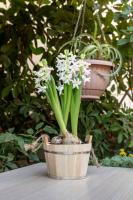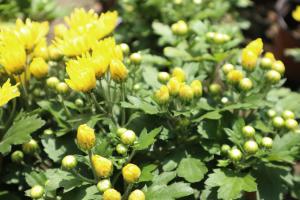Introduction
Chestnut trees are a popular choice for gardeners and farmers alike, thanks to their delicious nuts and ornamental value. When planting chestnut trees, one of the most important considerations is spacing. This article will explain how far apart you should plant chestnut trees to ensure their proper growth.
Factors to Consider
Before determining the proper spacing of chestnut trees, there are several factors that you must consider. First and foremost, you need to determine the type of chestnut tree that you are planting. The spacing requirements for Chinese chestnuts, for example, may differ from those of American chestnuts. Secondly, you must take into account the mature canopy size of the chestnut tree. This will largely depend on the variety you are planting, and whether it is a dwarf or a standard tree. Finally, you need to consider soil fertility and water availability, which will impact the growth rate of the chestnut trees.
Spacing for Dwarf Chestnut Trees
If you are planting dwarf chestnut trees, they can be spaced as close as 10 to 20 feet apart. This is because these trees have a smaller mature height and canopy spread compared to standard chestnut trees. However, it is still important to take into account the variety you are planting, as well as soil fertility and water availability to ensure optimal growth.
Spacing for Standard Chestnut Trees
For standard chestnut trees, the recommended spacing varies depending on the mature canopy size. As a general rule, chestnut trees with a large canopy should be spaced at least 30 feet apart, while those with a medium-sized canopy should be spaced around 25 feet apart. For small canopied chestnut trees, you can plant them 20 to 25 feet apart. Again, it is crucial to consider soil fertility and water availability when determining the spacing of your chestnut trees.
Other Considerations
In addition to spacing, you should also consider other factors that can impact the growth and health of your chestnut trees. These include proper planting techniques, such as digging a hole that is wide and deep enough to accommodate the root ball, and watering the trees regularly. You should also monitor your trees for any signs of pests or diseases, and take appropriate action if necessary.
Conclusion
Chestnut trees can be a wonderful addition to any garden or farm, providing both ornamental and edible value. However, it is crucial to plant them with the proper spacing to ensure their proper growth and health. By taking into account factors such as tree variety, mature canopy size, soil fertility, and water availability, you can determine the perfect spacing for your chestnut trees.

 how many times do yo...
how many times do yo... how many planted tre...
how many planted tre... how many pine trees ...
how many pine trees ... how many pecan trees...
how many pecan trees... how many plants comp...
how many plants comp... how many plants can ...
how many plants can ... how many plants and ...
how many plants and ... how many pepper plan...
how many pepper plan...






























